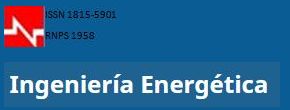Resilience empirical analysis of the Cuban economy's energy sources between years 1971-2050 using HHI and LKI
Análisis empírico de resiliencia de las fuentesenergéticas de la economía cubana entre los años 1971-2050 utilizando HHI y LKI
Resumo
This article focuses on the Cuban economy and its ability to recover its energy sources and associated technology. This study includes three resilience analyses: (1) total energy consumption, (2) indigenous energy sources, and (3) imported energy consumption. These three resilience analyzes are performed using the Herfindahl-Hirschman Index and the Lauraéus-Kaivo-oja Index. The historical time horizon of these resilience analyzes is between 1971 and 2018. Along with these historical analyzes of energy sources, a long-term scenario from the International Energy Agency, IEA, will also be put into practice until the year 2050 to Cuba based on HH and LK indices. The article predicts that while demand for fossil fuels has collapsed during the Covid-19 crisis, renewable energy production should continue to grow. These resilience analyzes of the Cuban energy economy provide useful information on the Cuban energy planning process.
Downloads
Publicado
Edição
Secção
Licença
Los autores que publican en esta revista están de acuerdo con los siguientes términos:a. Los autores conservan los derechos de autor y garantizan a la revista el derecho de ser la primera publicación del trabajo al igual que licenciado bajo una Creative Commons Attribution License que permite a otros compartir el trabajo con un reconocimiento de la autoría del trabajo y la publicación inicial en esta revista.
b. Los autores pueden establecer por separado acuerdos adicionales para la distribución no exclusiva de la versión de la obra publicada en la revista (por ejemplo, situarlo en un repositorio institucional o publicarlo en un libro), con un reconocimiento de su publicación inicial en esta revista.
c. Se permite y se anima a los autores a difundir sus trabajos electrónicamente (por ejemplo, en repositorios institucionales o en su propio sitio web) antes y durante el proceso de envío, ya que puede dar lugar a intercambios productivos, así como a una citación más temprana y mayor de los trabajos publicados (Véase The Effect of Open Access, en inglés).

